If you want to start an online education business but are unsure which niche to pursue, online learning is worth a closer look. By 2027, the global eLearning market is expected to skyrocket to $521.8 billion, according to Research and Markets. This shows just how much potential there is in the online learning space.
In this post, we’ll walk you through everything you need to know to build an online course business, complete with step-by-step guidelines and examples.
Content:
What is an online course business?
How to start an online course business? Simply having a course doesn’t mean you have an online education business yet. It’s about reaching the right audience, providing them with the tools and knowledge they need, and ensuring they get the outcomes they’re looking for.
What kind of information can you turn into an online course? Almost anything. Whether it’s professional skills or hobbies, practical knowledge or spiritual practices, content for grownups or kids — there’s potential to create an online course on just about any topic you’re passionate about.
For instance, Udemy, an online learning platform where people can find and take courses across various subjects, from video editing and production to UX design.
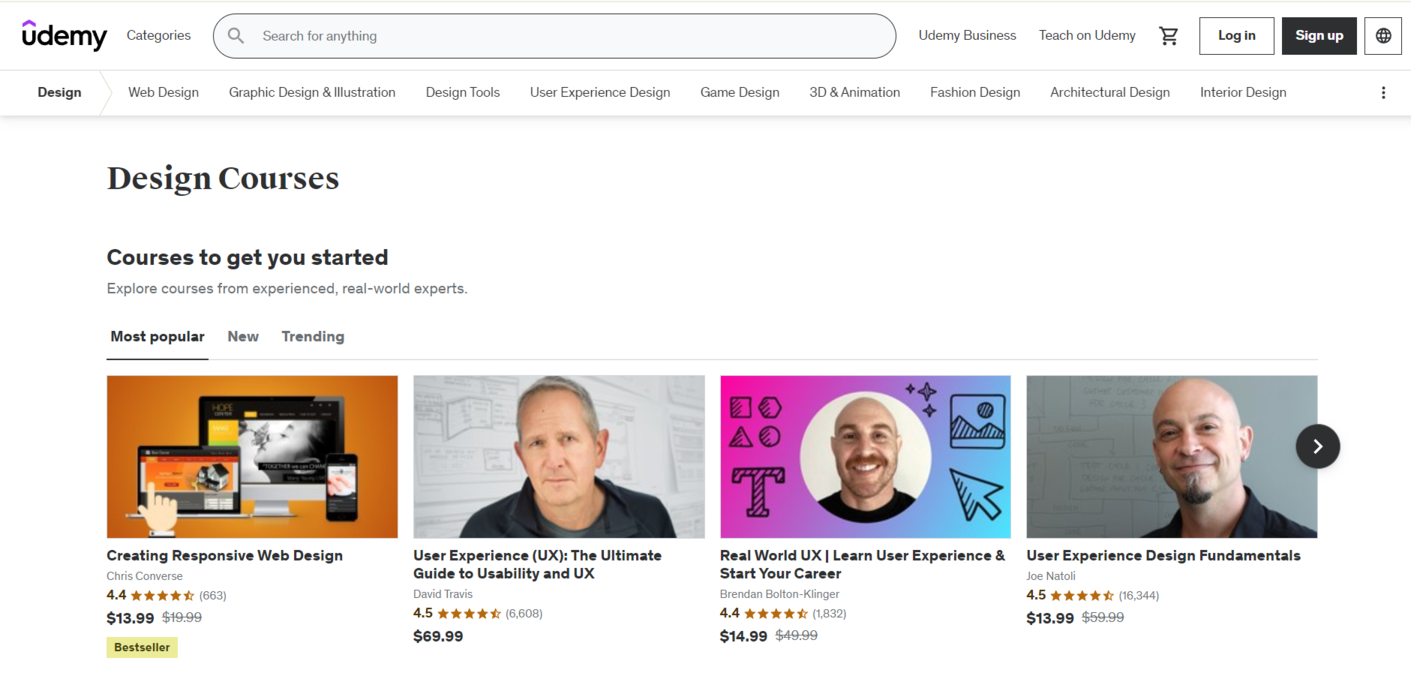
edX is another online learning platform that offers a wide range of courses with a strong emphasis on higher education and professional development. For example, they feature an entire section dedicated to courses on how to use ChatGPT.
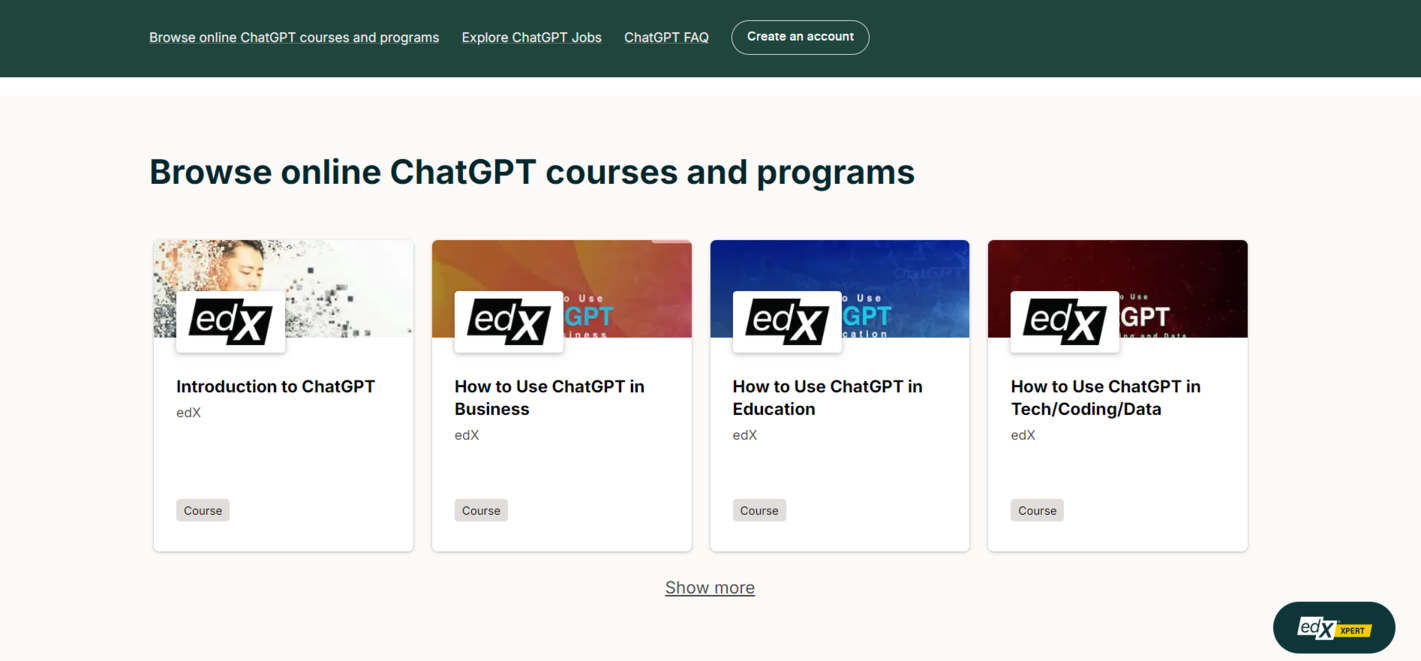
Alison offers free courses at both diploma and certificate levels globally. Health is one of the themes covered by their courses.
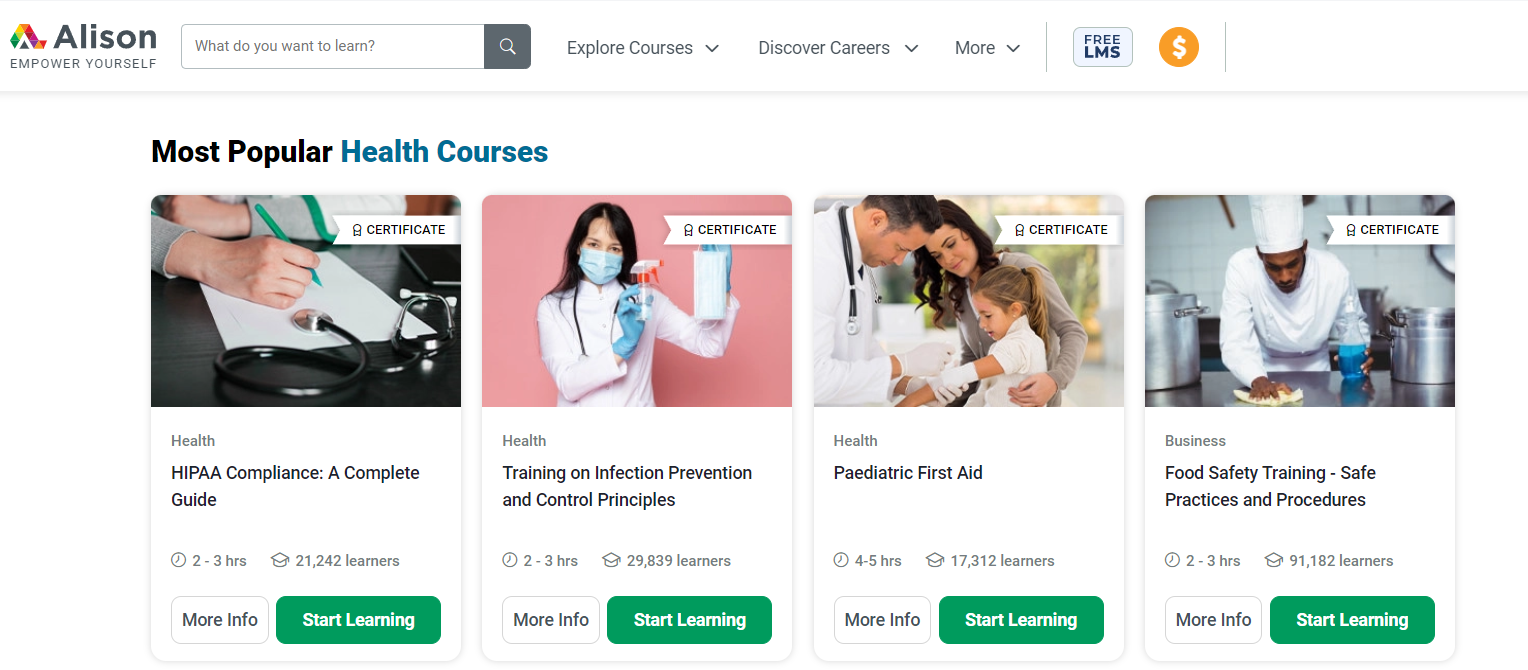
Harvard Online is a platform offering courses that draw on the expertise of Harvard University’s faculty across various disciplines. For example, they offer theology courses.

Now, let’s explore who might be interested in starting an online course business.
Who can start an online course business?
In the online education business, there’s no strict gatekeeping on who can create and teach courses, but for your course to be successful, you need to be truly skilled at what you’re teaching. If you’re planning to sell a cake-baking course, for example, it’s not enough to just know how to bake cakes — you need to be a master at it.
This expertise is crucial not only for creating quality content but also for marketing your course. People need to see why your course is worth their time and money. This means showcasing your expertise (or that of your instructors) with tangible proof, such as successful case studies, impressive metrics, or financial results, depending on the field.
So, anyone with enough expertise to teach others or the ability to hire experts to do so can start a successful online course business.
6 main steps to start an online course business
To help you organize your online course business, we’ll break down the essential steps point by point and outline the tools and strategies you’ll need to turn your plan into reality.
Choose your course topic
The first step in building an online course business is picking the right topic to teach. Think about what you want to be known for and what you feel confident enough to share with others.
You can start by reflecting on your life and work experiences. What have you learned that others might find helpful? For example, if you’ve spent years working in marketing, you could create a field-specific course on marketing strategies for jewelry brands.
Or, if you’ve honed your skills in a hobby like photography, that could be an excellent course topic, too. Focus on areas where you can offer real value and feel comfortable sharing your knowledge.
Ensure the demand for your course topic
If you’ve chosen a topic or have multiple course ideas and aren’t sure which to pursue, it’s essential to do some research. This will help you assess the potential of your topic. Investing time in research upfront is far more cost-effective than spending time, effort, and money on starting an online course business that might not resonate with your audience or meet your expectations.
Start by looking for others in an online education business who are offering courses on the topic you’ve chosen. If you find some, that’s a great sign — it means there’s demand. However, if there are a lot of similar courses out there, you’ll face stiff competition, making it harder to stand out. This is where your unique value proposition comes in. Think about what will set your course apart. If you’re confident your course has a special twist, you’ll be ready to promote it during the marketing phase (but we’ll get to that later).
On the other hand, what if you find no competitors? Does that mean you’ve struck gold with no competition? Not necessarily. There are two possibilities: either the topic is so niche that no one has tapped into it yet — which could be a fantastic opportunity for you — or there’s simply no demand for it, making it unwise to invest in creating a course.
An easy way to measure demand for your topic in an online education business is by using Keyword Planner in Google Ads. This tool lets you see how many people are searching for your topic each month: the more searches, the greater the demand.
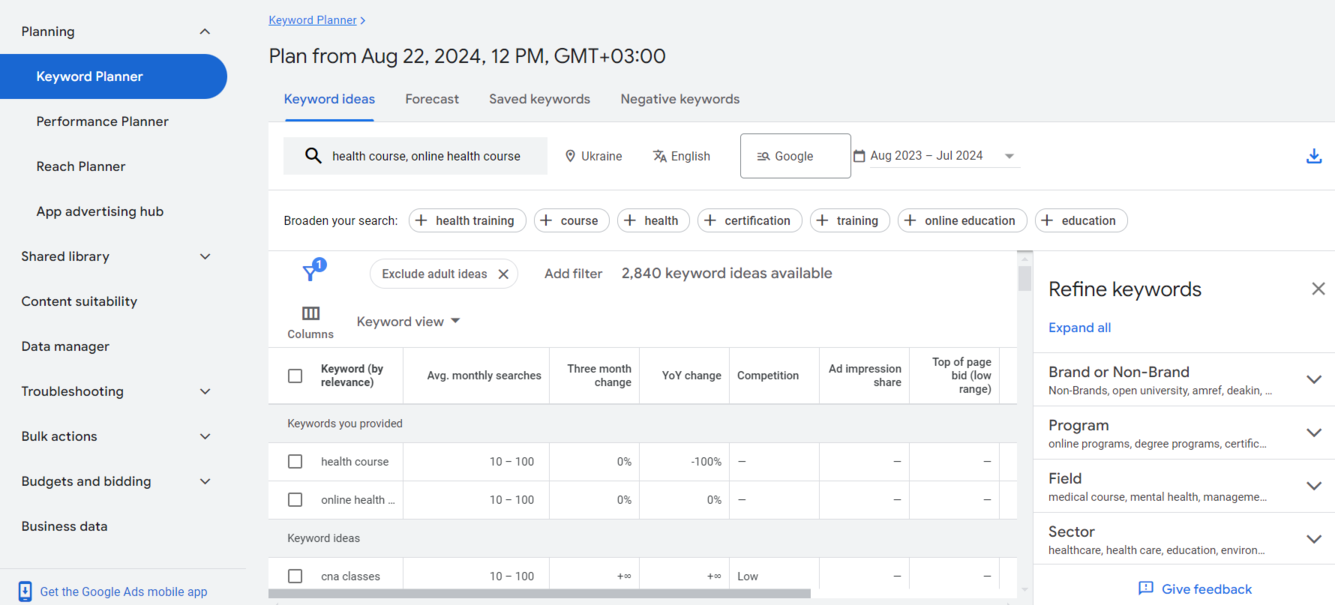
Here are three other ways to discover what your potential audience is interested in and whether they’d be excited about your course:
- Explore themed groups on social media and forums like Reddit. Here, people discuss topics they care about, sharing their pains and problems — exactly what your course could address.
- Check out customers’ feedback of your competitors on various review websites. Users often highlight what they love and what’s missing. This feedback is a goldmine for identifying your unique value proposition.
- Ask your audience directly which topic they find most interesting, especially if you have a list of subscribers. You can also use your company’s social media channels to gather insights.
Got a website? It’s a fantastic place for an online course business to tap into your potential customers’ opinions. For example, you can easily create a survey right on your site to gather the insights you need. Widgets like inline or pop-up forms work great for this. The key is to customize their appearance so they’re helpful without being annoying or distracting from the primary goal of your site.
For instance, you can easily create a perfect survey using our intuitive pop-up builder. It offers a variety of customizable templates and allows you to set detailed display conditions, like how often it appears, when it shows up, and how it reacts to visitor behavior, etc.

Now that you’ve nailed down your course topic, confirmed there’s demand, and discovered what your potential audience is interested in, it’s time to dive into creating the course itself.
Create your course content
This step is both one of the most time-consuming and one of the most creative parts. No matter how long it takes to create your course, the process will likely follow some key steps.
Start by crafting a compelling course title and subtitle. Your course title should grab attention and clearly convey what it is about, while the subtitle should add more detail and entice potential learners. Use actionable language: a strong CTA should inspire actions. To do this, use dynamic, action-oriented words like “explore,” “access,” or “generate.”
These words clearly guide your audience toward the next step you want them to take. Research shows that incorporating action words into your CTAs can significantly boost engagement, with conversion rates potentially increasing by as much as 121%.
Then, define clear learning outcomes. Make sure they are specific, measurable, and aligned with your course goals. These outcomes should highlight the value your course offers and what students will be able to achieve by the end. To truly captivate your audience and inspire action, eliminate any objections they might have upfront. Anticipate the concerns or doubts your recipients might be harboring and proactively address them.
For example, you might emphasize convenient payment options, a free demo period, and a solid money-back guarantee. Statistics ahow that by effectively addressing objections, companies can significantly improve their sales outcomes, potentially boosting close rates by up to 20%.
Proceed to collecting and organizing your content. Gather all the materials you’ll need, including research, references, and any existing content. This might include articles, case studies, practical exercises, and videos that will enrich your course.
Develop a comprehensive course outline that breaks down your content into individual lessons or modules. Decide on the format for each lesson — whether it’s video, audio, text, or a mix — and plan how each will build on the last to guide learners through the material.
This is how one of the courses on Udemy is structured in:
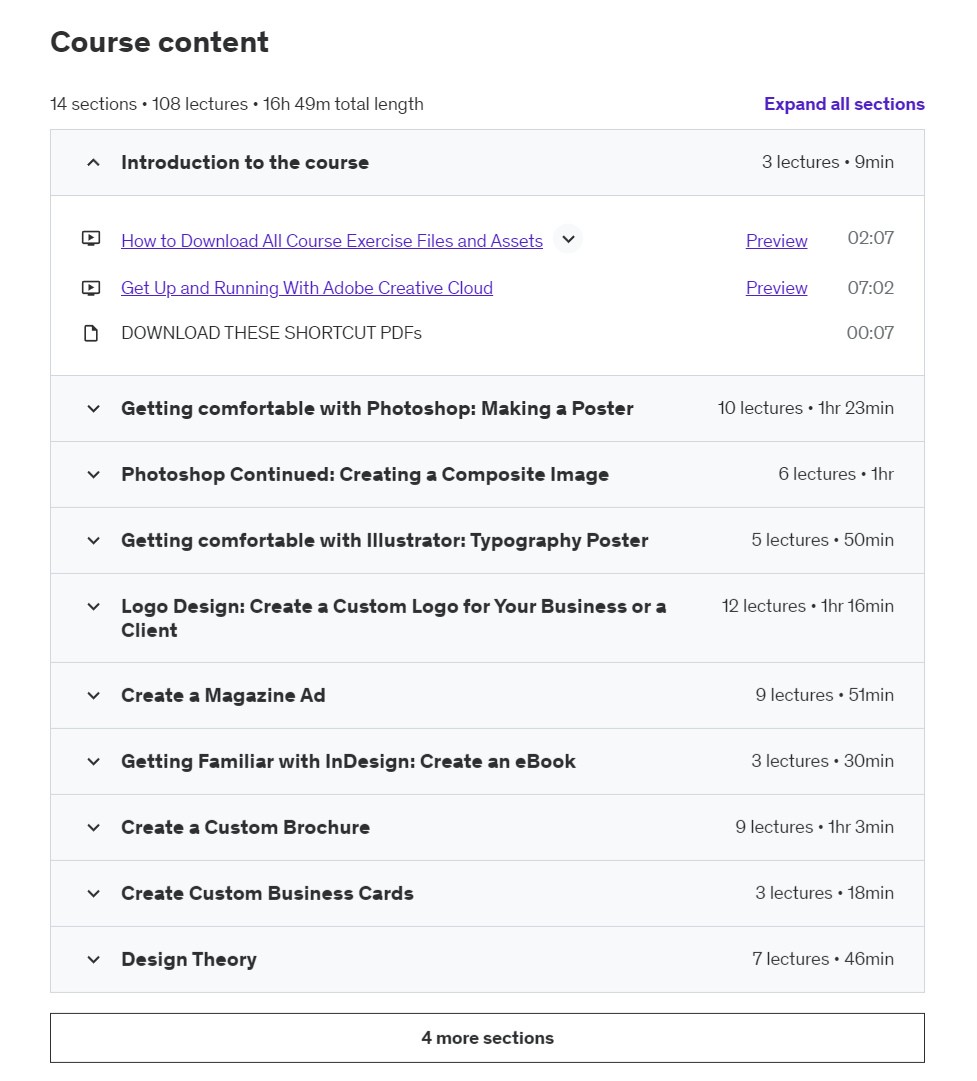
Next, determine the best delivery methods. Consider how to present each module for maximum impact. For instance, complex concepts might be best explained through video, while step-by-step instructions could be more effective in a written format. Interactive course elements like quizzes or assignments can also enhance learning.
Then, start creating. Record your video and audio lessons, and then edit them to ensure they’re polished and professional. Don’t forget to add any necessary graphics, slides, or supporting materials.
Set up your online course platform
It’s time to choose a platform to host your course. This could be a custom website to showcase your content, a dedicated eLearning platform, or a course marketplace. Let’s explore these popular options with their pros and cons in more detail.
While a self-hosted online course website might require a bigger investment in both time and money — you may need to hire developers to bring your vision to life — it comes with some significant benefits.
Pros of a self-hosted course website:
- You’ll have complete control over your branding, design, and user experience, allowing you to customize the website to perfectly match your needs.
- You won’t be limited by the restrictions of third-party tools, so you can integrate any features, plugins, or payment gateways you prefer.
- You’ll keep 100% of your earnings without having to share them with a platform, ensuring that all revenue goes directly into your pocket.
Cons of a self-hosted course website:
- Beyond the initial setup expenses, you’ll need to handle all aspects of technical maintenance, including hosting, data security, and updates, which can be both time-consuming and costly.
- You’ll be responsible for managing marketing efforts, often requiring investments in external services or tools. Navigating third-party tools can be challenging and may require additional support.
You can also consider online course platforms, as they provide all the tools needed to create, manage, and promote your eLearning programs, making it easy to track performance, process payments, and handle marketing and customer communication.
Pros of online course platforms:
- They offer customizable course templates, which speed up the launch of any educational product.
- They often come with built-in marketing tools, CRM systems, hosting, and convenient integrations with other solutions — all through a single platform. This means you avoid the hassle of setting everything up yourself, as you would with a self-hosted site.
Cons of online course platforms:
- Customization options may be somewhat limited.
- You may need to share a portion of your earnings with the platform.
- You’ll operate within their guidelines and policies and may face some restrictions on customer data access.
Course marketplaces are also worth considering. They are platforms dedicated to selling a wide range of online courses across various fields.
Pros of course marketplaces:
- They offer powerful tools for creating and selling your courses online.
- They help you reach your target audience more quickly by tapping into an existing pool of learners actively searching for courses like yours. This can significantly boost your visibility and speed up your course’s success.
Cons of course marketplaces:
- You have limited control over your product, marketing strategies, and user data.
- You’ll face considerable competition from other course creators and might need to subscribe to a pricing plan or share a portion of your earnings with the platform.
- The platform may handle customer service, leaving you less direct interaction with your learners and potentially affecting your ability to build a personal connection with them.
Decide on your course pricing
Once you’ve crafted your course content and selected your selling platform, the next step is to decide exactly how you’re going to sell it.
There are plenty of course payment structure options to consider, but here are several important factors to weigh:
- Take a look at what your competitors are doing. Analyzing their pricing can give you valuable insights. For example, a marketing course designed for students won’t carry the same price tag as one aimed at seasoned professionals. Understanding where your course fits in the market will help you set a competitive and realistic price.
- Consider offering a demo version or a free trial. This strategy lets potential students experience your course content firsthand before making a commitment. It’s a great way to build trust and help them decide if your course is the right fit.
- Think about whether a one-time purchase or a subscription model makes more sense for your audience. You might also want to offer different pricing tiers, such as basic and premium access or even an enterprise plan tailored for larger organizations. These options can attract a wider range of customers with varying needs and budgets.
- Don’t forget to communicate the value of your course. Highlight the expertise of the course creators — whether it’s you or other professionals — and share their achievements and experiences. As testimonials from your students become available, use them to showcase the success they’ve achieved with your course.
All of this helps reinforce the value of your offering and can justify your pricing in the eyes of potential clients.
Market your course
So, you’ve done the hard work — researched your target audience, created engaging course content, and launched your website or standalone landing page. Now, can you just sit back and watch the students roll in? A new and crucial phase is here: course promotion.
Some popular and effective methods to help your course shine and attract students include pop-ups, chatbots, and direct channels.
Pop-ups are a great way to turn casual visitors into paying students and engage them right on the spot. They can swoop in just when a visitor is about to leave, giving them a reason to stick around and check out your course. According to statistics, exit-intent pop-ups can save 10-15% of lost website visitors.
For example, you can use a pop-up to offer guidance or help a site visitor make a decision.
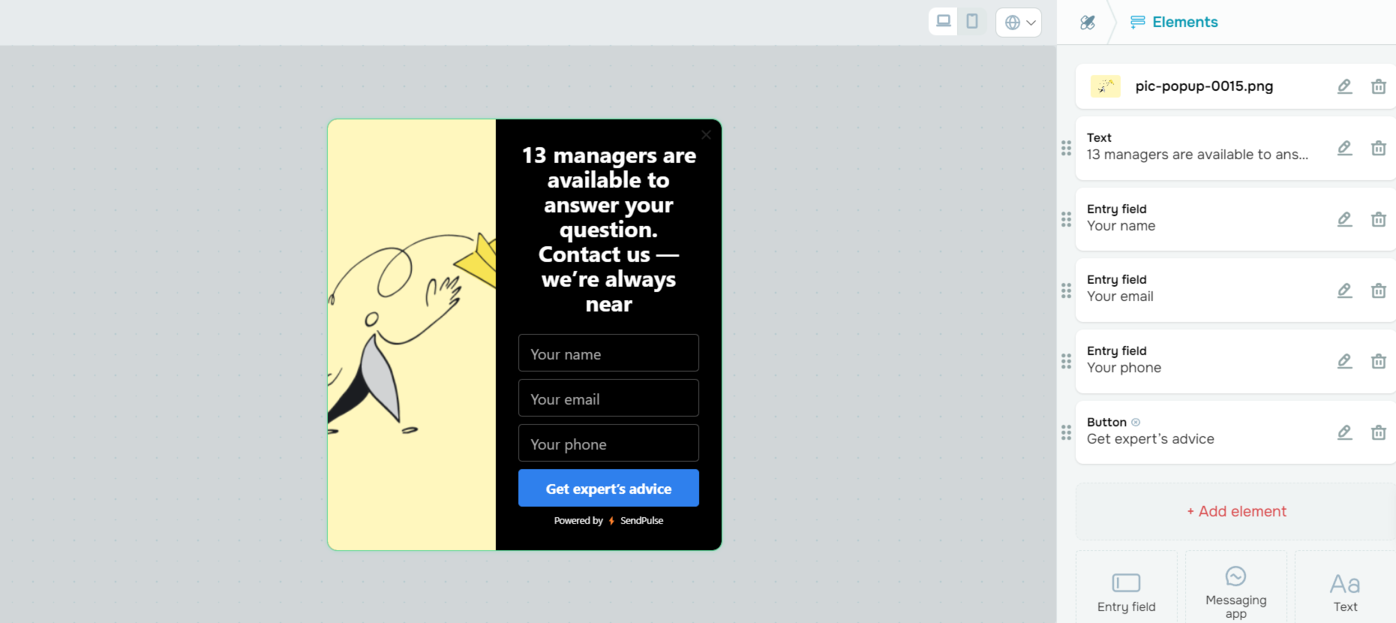
Additionally, you can use pop-ups to gather feedback on your course and your site’s usability. For instance, here’s how Udemy implemented this approach:
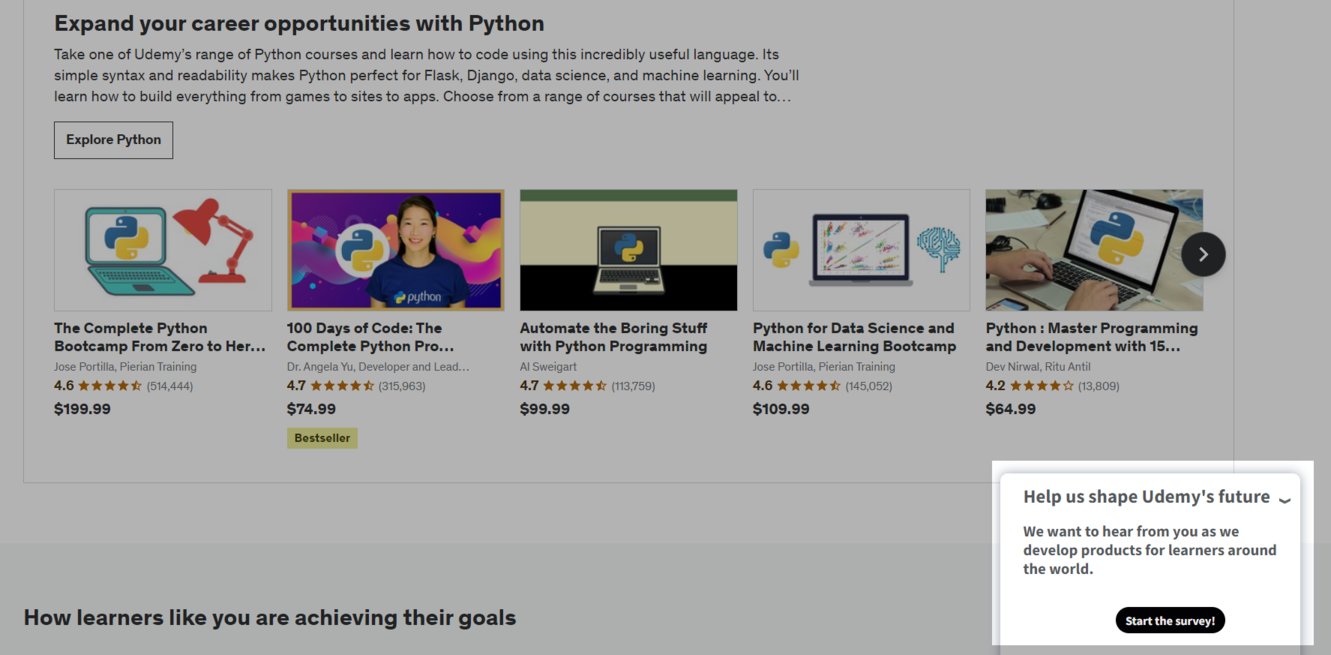
This strategy not only helps you refine and enhance your product based on customer feedback but also shows your customers that their opinions truly matter.
Chatbots on your website and in popular messaging apps offer another great way to turn potential customers into real ones. They can guide visitors through your offerings, answer FAQs, and send targeted promotions, making it easy to turn interest into action. By encouraging users to sign up for newsletters or demos and offering personalized course recommendations, chatbots help you collect and nurture leads effortlessly.
Plus, chatbots provide instant, 24/7 responses to queries, enhancing the user experience and reducing drop-offs. For enrolled students, chatbots keep the engagement going by offering support, sending reminders, and delivering extra resources — keeping learners motivated and boosting course completion rates.
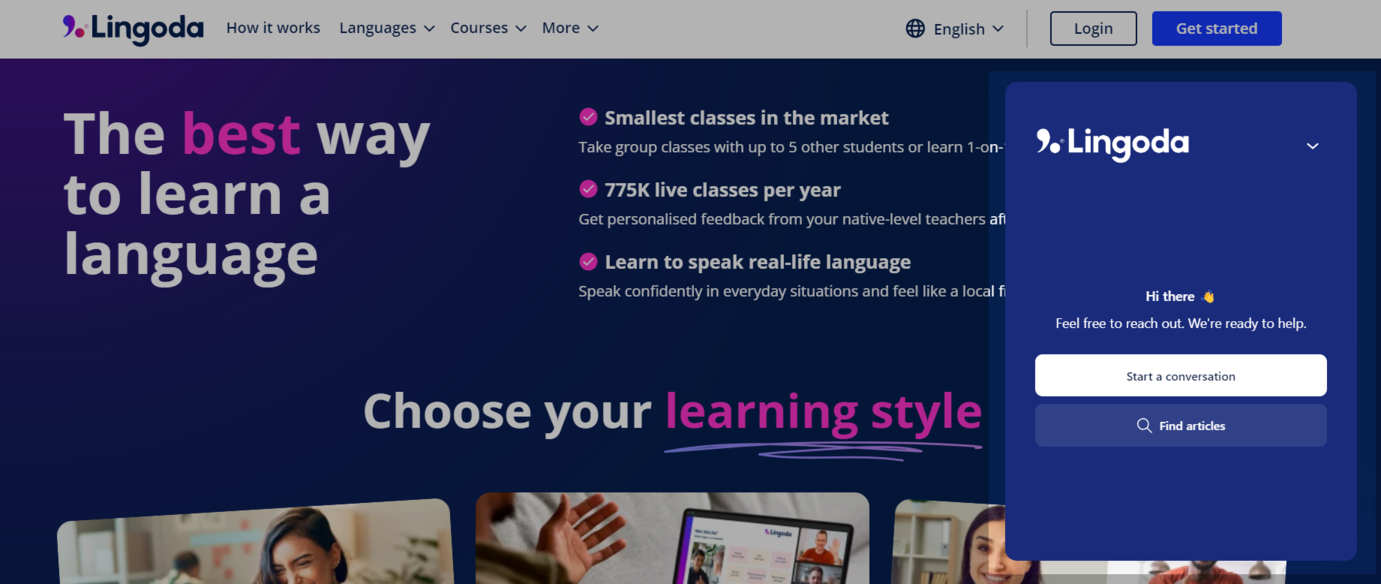
Direct channels can also be leveraged to draw more customers to your courses. For example, use push notifications on both your website and mobile devices. If you already have a contact base, you can reach out to subscribers through popular channels like email and SMS.
Here’s how edX uses email as a channel to communicate with subscribers:

To grow your mailing list, use subscription forms on your website to collect email addresses. But don’t just gather them — store them safely and utilize this data effectively.
It’s ideal when one system can handle collecting, storing, and using client data for seamless communication. With SendPulse, you’ve got everything you need to launch and manage your online course effortlessly. You can build your course using our easy-to-use course builder, integrate various payment methods, and engage with customers through multiple direct channels. Plus, create tailored pop-ups for every need and keep all your data organized with our CRM.
Conclusion
Now that you know how to start an online course business, you’re all set to make it a success. We’ve walked through every step, from picking a topic and analyzing the market to promoting your course. Remember, each step is crucial for your strategy’s success. For example, even if your course material is top-notch, if it’s not presented in a user-friendly way, you might miss out on potential customers.
Pay special attention to how you promote your online course. With high competition and users expecting seamless, personalized experiences, it’s essential to offer convenient payment options and easy access.
If you’re looking for a comprehensive toolkit to launch and grow your online course business, SendPulse is your go-to choice. Our platform provides everything you need to create engaging courses, communicate effectively with your audience, and market like a pro.
![How to Start an Online Course Business [2024 Guide]](https://www.spcdn.org/blog/wp-content/uploads/2024/09/course-business-cover-1110x420.png)







